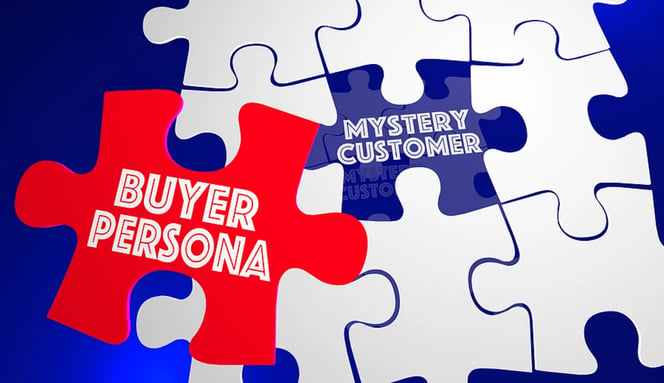
You market your product or services on your website, through social media, email marketing, newsletters and direct mail, but how much do you really know about the people you are marketing to? Your target audience is most likely comprised of several different types of buyers, each with their own motivations and needs. If you want to gain their interest and attention, then you’ll need to understand what these are. What do they like and dislike? What are their interests? Why would they be interested in what you have to offer? The best way to reach your audience and know who you are marketing to is to do your homework and create a buyer persona for each different segment of buyers.
What is a Buyer Persona?
“A buyer persona is a semi-fictional representation of your ideal customer based on market research and real data about your existing customers.” --HubSpot
Instead of your target audience being an nondescript conglomeration of ideas and demographics that sort of describes the kind of person you are trying to market to in general, a buyer persona defines that person according to demographic information (gender, age range, job title, etc.) and psychographic information (what their motivations and needs are). This gives you an idea then of what information they are looking for to satisfy those needs.
Why are Buyer Personas Important?
Understanding your buyer personas helps you to know them better so you can engage with them more effectively. By understanding their behaviors and needs, you can personalize and tailor all your content to meet their expectations and begin building trust with them.
People gravitate toward companies they know and trust. Building trust shows genuine understanding and concern. By creating buyer personas and keeping them top of mind, you’ll be able to stay focused on providing information that is carefully tuned in to helping your customers or prospects fulfill their needs.
Here are some statistics about the impact of buyer personas when marketing:
- Using marketing personas made websites 2-5 times more effective and easier to use by those who were specifically targeted. HubSpot
- According to marketing blogger Mark W. Schaefer, 3-4 personas usually account for over 90% of a company’s sales. Business Grow
- 44% of B2B marketers use buyer personas, creating a mix of opportunity and competition. Boardview
- 93% of companies who exceed lead and revenue goals segment their database by buyer persona. MarketingInsiderGroup
Buyer personas simply make sense. They help you find your best customers and vice versa. They keep your marketing and sales teams focused, more efficient, and more effective. By taking the time to create finely tuned buyer personas, you’ll be able to create more targeted and effective marketing.
How Can You Use Personas?
Personas allow you to personalize and target your marketing for different segments of your audience, which will increase engagement and ultimately conversion into sales. The more you know about them, the more you can market in a way that appeals to their interests. For example, if you know that most Operations Managers at the facilities who use your services read IndustryWeek and follow MLB, you can use this information to buy an ad in IndustryWeek and perhaps nurture them with content or offers that relate to baseball. This makes your brand more relatable and can increase your open rate. Knowing more information about your buyer helps you to map out and create highly targeted content for your content marketing strategy.
Here’s another example. If you owned a coffee shop, you may create a buyer persona that represents one target coffee buyer, Sarah Student.
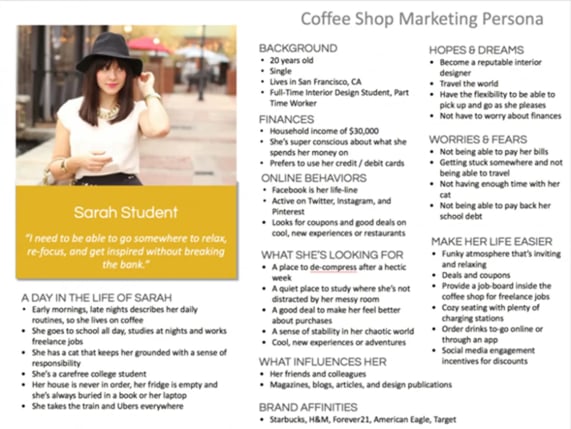
Based on this persona, we know about Sarah’s life, background and details about her that help us understand what would make her life easier. Her social media preferences indicate she uses social media channels to learn about discounts and engage with a brand. This information is important to keep in mind as you create a marketing strategy and develop content to reach and influence this persona.
But Sarah isn’t your only buyer segment. You also have Consultant Carl, who works from a home office and comes to your shop to meet clients and to work in a more social environment. Depending on your business and your market channels, you could have as few as one or two personas, or as many as 10 to 20. There is no correct number as the number of personas you decide to create is based on your products and services and the audiences you would like to target for each of your offerings. For clients who have several personas, we recommend that they prioritize them based on who their best customers are so we can focus our efforts (and budget dollars) on those first. You can always broaden your scope by working down your list after you have those more lucrative customers adequately addressed.
How Do You Create Buyer Personas?
“When creating your buyer persona(s), consider including customer demographics, behavior patterns, motivations, and goals. The more detailed you are, the better.” --HubSpot
There are several methods you can apply to construct your buyer personas:
- Research – Perform background research to understand industry info and competitors.
- Surveys – Send surveys to your current customers, target customers, competitors’ customers and market influencers that ask questions about their demographics, education, career path, what tools they use in their job, their challenges, responsibilities, how they find information, what publications they read, what associations they participate in, and their communication preferences.
- Create Website Forms that ask one question about a user’s preferences each time they engage to start gathering information about what they read, their interests, their preferred social media channel, etc. As you progressively learn more about them, you’ll be building a robust profile with rich insights about what makes them tick.
- Sales Feedback – Survey or have a meeting with your salespeople to see how they would generalize your best customers.
- Social Media / Online Community Analysis – Review your online account analytics for trends and investigate which posts and articles draw more engagement.
- Target Audience Interviews – Reach out to your audience directly and find out what they like or dislike about your offerings.
To help you, here are some examples of the information you should gather during this process:
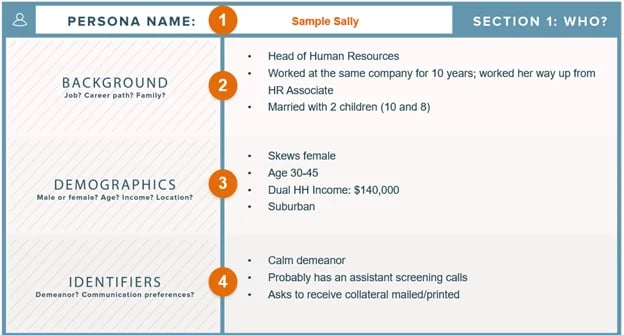
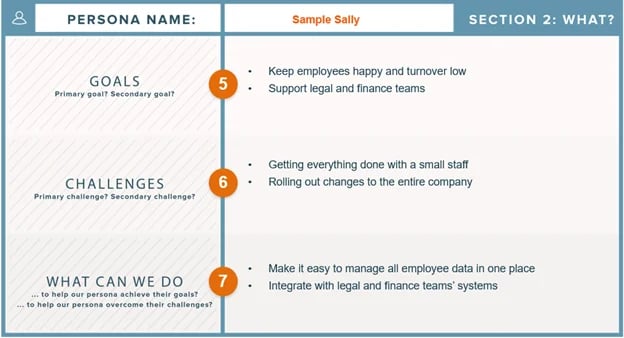
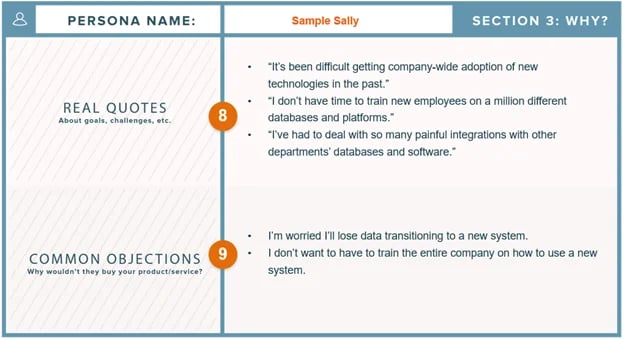
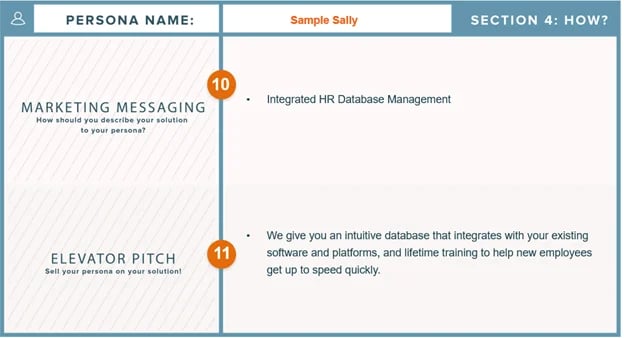
Knowing this definition of your target buyer(s) gives your marketing and sales teams the ability to create content that is useful to them. Creating a buyer persona is the first step of inbound marketing, as it helps your team provide value to real people who are looking for solutions to the challenges they encounter.
Once you have defined these details, organize the information and find an image that will best represent your new buyer persona. This will help you focus on marketing to this persona that now has a face and known identifiers.
Final Thoughts
Truly understanding your buyer will help you create content that has a much better chance of being relevant, interesting and valuable to them. Additionally, creating buyer personas will help you adapt the key aspects of your content marketing directly to your target buyer, resulting in greater success.
Do you need help building your buyer personas? If so, contact us and we would be happy to set up a half or full day consulting session with you and your team to build out and document your buyer personas in detail.




